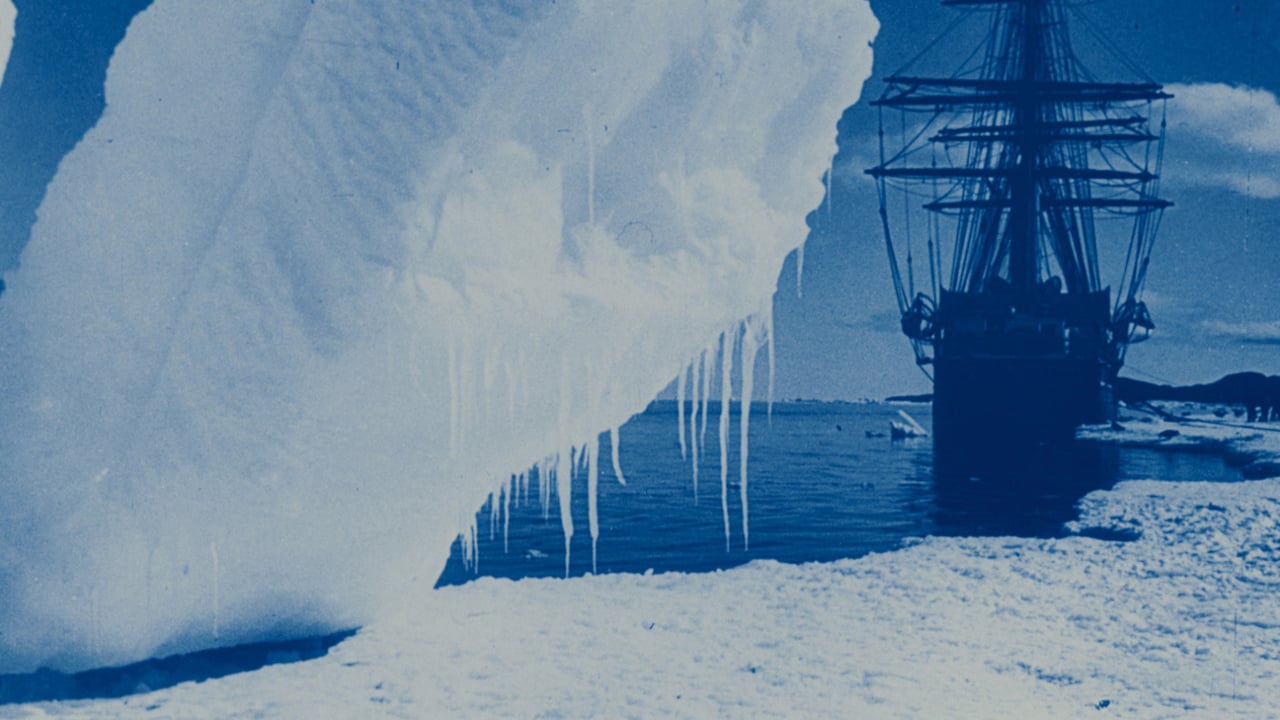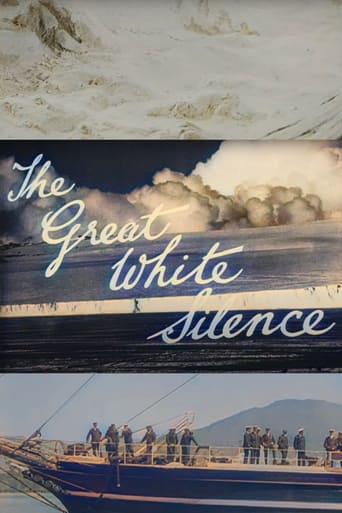



The greatest movie ever!
Absolutely brilliant
In truth, there is barely enough story here to make a film.
View MoreExcellent and certainly provocative... If nothing else, the film is a real conversation starter.
View MoreThis silent film was one featured near the beginning of the book 1001 Movies You Must See Before You Die, I didn't know what to expect from reading the title, but it sounded like a worthwhile thing to watch. Basically this is a silent documentary about the Terra Nova Expedition, where the British made an effort to plant the British union jack flag on the South Pole, using a group of men, horses (ponies), dogs and primitive snowmobiles hauling sledges. The expedition started from a base located on the Antarctic coastline, all footage was captured at the time of the event, expedition leader was Robert Falcon Scott, he and his men left from New Zealand and sailed into the Southern OCeon and its ice floes. They safely landed on the icy coastline of Ross Island, filmmaker Herbert G. Ponting followed the men setting up tents, practising skiing and preparing to travel southward toward the Pole. The film ends with the explorers pushing off from their base, but title cards remind the viewer that this story has a tragic conclusion, Scott and the four companions never returned from the Pole, but they said that they would die trying to do what man had never done before. This film is interesting with all the footage of the men going through the many icy landscapes and waters, you also see good footage of the wildlife, including killer whales, seals and penguins, but what is really fascinating to watch is the icebergs and other strange ice structures on the journey, it is a worthwhile silent documentary. Very good!
View More"The Great White South" can be an entertaining account of the Terra Nova Expedition, from Lyttelton, NZ to Antarctica. Watch with a mind's eye that can help you step backward in time, to the thinking of 1910. When watching how the story is pieced together, at first I was a little bothered by the light slap-stick splashed between the scenes that were shown. One bit of information about a certain cat was truly void of political-correctness, which made me bristle. But after a few viewings of the movie I came to actually appreciate the humor, partly by understanding the reason for its use. The cinematography and story-telling shared by Herbert Ponting was based on turn-of-the-19th-century knowledge and thinking - a far cry from where society is today. Keeping this in mind helps one enjoy this piece of cinematic achievement more.I was fooled upon first glance that Mr. Ponting might have joined the actual South Pole expedition as they actually set out in November, 1911, to undertake the quest for the frozen goal. There were still images taken at the Pole, not by Mr. Ponting, but by Lt. Henry Bowers, one of the four men selected. The quips actually became comic relief as the story turns quite chilly, with some plot revelations as the four explorers trudge hundreds of miles, over a two-month period. Allow yourself to step out of your own comfortable shoes and into those of these comrades, and you'll appreciate the story much better. It's a slice of significant world history, in which Mr. Ponting was able to capture, during the journey. It's amazing to learn the back stories of the major characters and how events converged with the trek for the South Pole, and why it also took more than a decade for this film to be completed. Cast out what would be today's poor choice of mingling with wildlife (and otherwise meddling with it) and revel in some enjoyable photography, story-telling and cinematography of its time. One footnote: I watched the BFI-restored film, complete with restored colorizing and tinting (first done by Mr. Ponting himself). Oranges, blues, and odd shades of red seem meant to add a sense of time of day in some scenes, or the color of sea water. It didn't disturb me to see this when realizing that the color was as the filmmaker intended. The soundtrack by Simon Fisher Turner (Soleilmoon Recordings - 2011) was a welcome and haunting treat, which rejected the customary organ music one expects with silent films while adding depth to the visuals.
View MoreI'd like to be able to say this was a great film but in all honesty I can't. At least half of it is taken up by Ponting anthropomorphising about the animals he filmed. Scott's push for the pole and tragic end are depicted from footage by Ponting but he did not go with them so it isn't any better than modern reconstructions in documentaries. The best bits are the contemporary footage of the early preparations and passage to Antarctica. The choice of music for the soundtrack is pretty dire – the Vaughn Williams score for the John Mills film would have been predictable but would have been better. This is the film as released in 1924 and as such is an important historical artefact so I shouldn't complain too much. However, a better treatment would be to use the best material in a documentary and release it on DVD/Blu-Ray with the full original as bonus material for those who really want to see the whole thing. As a viewing experience for a modern audience it's pretty dull and doesn't tell you what you really want to know.
View MoreThis film is a true inspiration. The level of patience and care that has gone into capturing these stunning images in the frozen wastes of the Antarctic, way back in the early days of cinematography - 1912, is amazing.It's beautifully shot and edited, (recently cleaned up for the BFI), with a suitable score which gives the film a playful tone- especially as Ponting spends time following the penguins, which was comical.Towards the end the film becomes much more emotional and by this point you truly realise the scale of the expedition, the sacrifices made and how brave Captain Scott, the explorers and Ponting with his camera were to undertake such a daring journey.
View More